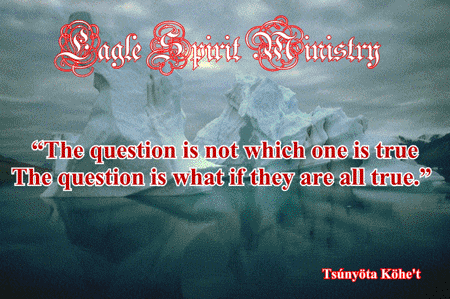 |
 |
 |
||
 |
||
|
|
||
|
Most of the Hottentot myths and legends have a solar and celestial bias. The name of the Hottentot deity and supreme being is Tsui-Goab. To him they ascribe the creation of the world, of man, and the elements. It is he that shakes their crops prosper and gives them skins, full bellies and happy hearts. His opposite is Gaunab, a kind of vengeful devil. This very same Tsui-Goab, the supreme being of the Khoi-Khoi, is the subject of the strangest of stories. He is known to have first lived many generations ago, when he was said to have been an old witchdoctor with a broken knee named U-tixo. Among the Hottentots, he was renowned as a sorcerer of great skill. Having been regarded as extraordinarily powerful during life he was invoked after death as one who could still bring help and protection, and with the passing of time, he became closest to their conception of God. U-tixo, they said, was a powerful chief of the Khoi-Khoi, and the first Khoi-Khoi ever. He made war against a wicked chief called Gaunab who had killed many Khoi-Khoi. They had many battles. Each time U-tixo won, and grew bigger and stronger. At last, in the final terrific struggle, he gave Gaunab a great blow behind the ear. While Gaunab lay dying, he landed a last blow which hit U-tixo's knee, and since then U-tixo has been called Tsui-Goab, or 'wounded knee'. He was a prophet and able to do wonderful things. He died several times, but each time returned to life, providing occasion for great feasting and rejoicing. He made the clouds and lived in them, and brought the rain. Thus through him the cattle were plentiful and the grazing good. Tsui-Goab resides in a beautiful heaven of light and sunshine, and Gaunab, meaning 'destroyer', lives quite separately in a dark retreat. He sends the sleep of death to man, but Tsui-Goab, the Red Dawn, brings the light and life. The Khoi-Khoi always pray in the early morning with their faces turned towards the east where Tsui-Goab's first light appears. |
||
 |
||
|
The incessant chirping of a locust on the roof of one particular hut meant that a relation had died, and efforts were made to kill the insect. Misfortune would also follow if a bird flew into a hut, unless the bird was speedily killed. A man who trod on a grave, passed a grave unmindfully, or pointed at a grave with his finger, disturbed the rest of the dead, and had to be punished. The hooting of an owl at night was an omen of death. When the cattle strayed, the Hottentot would hang his kaross or blanket in the doorway. When the kaross began to swing to and fro it meant that the cattle were on their way back. A crowing hen would be despatched immediately, because a crowing hen was said to be cursing the family, and would cause one of the family members to die. A dog that climbed onto the roof of a hut, or dug about or scratched at the sides of the hut was also killed for the same reason. An ox or cow that switched its tail in a strange manner, or moved its outstretched tongue from side to side while lying down, was also regarded as a bad omen. In this case the animal was sometimes spared, but certainly soon disposed of to someone else. The hamerkop bird was held in great respect as a bearer of the tidings of death. Indeed, almost anybody seeing this strange bird at dusk, flitting about with weird activity along the edge of a marsh or pool while uttering its queer cry, would feel a prickling of the skin. When two or three are feeding in a small pool they will sometimes execute a singular dance, skipping around one another, opening and closing their wings and performing strange antics, reminiscent of the three weird witch sisters from Macbeth. The Hottentots believed that in the same way they can see their reflections mirrored in still water, a hamerkop bird can see reflections of the future, and knows who is shortly going to die. When the bird sees the image of a person with death overshadowing him, it will fly to the home of the doomed, and utter its three warning cries. The hamerkop will watch for the falling star which prophesies death, as it falls above the area of the dwelling in which someone is about to die. When it sees this star, it will fly over the abode venting its mournful cries. When the Hottentots saw the hamerkop standing in water stirring the mud with its feet and peering into the swirling water for fish, they said: 'See, the hamerkop is looking at our reflections to see who will be the next to die.' You may be sure they did not stay long to find out. To ward off enemies, both real and imagined, the head of the house sought out a certain root, on the end of which he rubbed some fat. He then heated the root in the fire. As soon as it began to flame and spit, he would go to the door and point the flaming root from left to right, pronouncing a magic spell. This would make the enemy become drowsy and fall asleep, and when he awoke he would lose his way; even if he had reached his destination, he would be rendered harmless. When the flame went out the head of the house would put the root back in its place in the hut. The certain root would be used in the same way if some of the stock strayed at night when jackals or other wild animals were about. If the women went on a journey during which they had to camp at night in the veldt, they took the root with them as a protection against wild animals. |
||
 |
||
|
|
||
|
The Hottentot has great faith in the protective and curative powers of water. Things or persons with potential to harm members of their society are rendered harmless by complete immersion in cold water, or by throwing water over them (which could be beneficial if the patient is feverish). After revisiting an old habitation (generally frequented by spirits on being deserted) or returning from a burial site, it was common practice to ward off harm by applying wet clay or cold water to themselves. Suspected sorcerers or naglopers were rendered powerless by being ducked in a pool. Though this practice is comparable to the ducking of witches in medieval European society, those unfortunate creatures usually succumbed to their ordeal, whereas the Hottentot witch was allowed to go free as soon as she had been ducked, and seldom suffered any ill effects. The Hottentots believe that the flowers that grow in water are really the spirits of girls who have angered the rain. Daughters must therefore speak gently and politely about the rain, or it will send lightning to kill them. Should lightning kill them, they reappear as beautiful white flowers growing in the water. Hottentots do not pick these flowers as they regard them as the embodiment of their dead daughters whom the rain has stolen forever. |
||
 |
||
|
The weather played the most vital part in the lives of the Hottentots, who had livestock to care for. They needed good rain for grazing and had many feasting and dancing rituals to bring on the desired rainfall. The Hottentots also sent parties into the veldt to search for the elusive chameleon, which was supposed to bring rain. When found it was buried stomach upwards in the earth, and special care was taken not to injure it. The people firmly believed that it would rain the same day. When it would rain the same day (hopefully for the chameleon's sake this was often), and after sufficient rain had fallen, or the rolls of thunder had grown quite frightening, the chameleon was dug up and set free. A substitute for the chameleon was the yellow cobra, which did not fare so well. It was half killed before burial, and only finished off when no more rain was required. Other practices to bring on rain were the burying of round stones in the veldt, and sending those who had been born during a rainstorm to walk alone in the bush. If the rainstorm turned into hail, the lastborn child of the family was asked to step outside and put a hailstone in his mouth until it melted. It was thought this would surely make the hail slacken. If the storm persisted, and the family became desperate, one of the old ladies were sent outside and told to pick up her hind kaross and bend over. The weather then became shy and the rain retreated in embarrassment. |
||
 |
||
 |
||
|
Hottentots had a vague notion of an evil spirit, and also knew of 'spooks' or ghosts. They used a word which means 'to bewitch', and spoke of sorcerers who were unlike the diviners and doctors in that they used their powers of the occult to do harm and not good. These sorcerers were naglopers, or night walkers, who carried out their nefarious deeds in the middle of the night. They were of both sexes, and their constant companions, their familiars, were the owl and the baboon. It is definitely stated by ethnologists, however, that the Hottentots only came to know of these creatures after they had become acquainted with the Bantu. After this, individual Hottentots began to copy their methods. Night walkers often betrayed themselves by trying to save an owl or baboon from being killed. They roamed the night with these eerie friends, meeting at an appointed spot, much as the European witches meet at their covens. They stripped themselves of all clothing and adorned their heads with human finger and toe bones. A lookout had to be posted at the graves of the newly dead as the naglopers would try to extract parts of the bodies for their rituals soon after burial. For this reason too, stones were often placed on the grave, which also served to prevent dogs or jackals from digging up the corpse. At night, night walkers would stealthily approach the huts, carefully walking backwards so that their footprints pointed away from their destination. The occupants, including the dogs, would fall into a deep stupor, so that the night walkers could carry out their wicked deeds undisturbed. Small children were especially attractive to these ghouls, and many became infected with foul diseases. Adults, too, did not escape their attentions. The women night walkers had their way with the men of the hut, and their male counterparts paid their vile court to the ladies. The sleepers only became aware of this the next morning when they awoke feeling weak and powerless in body and limb. Many a 'morning after the night before' must have been blamed on a convenient night walker. It was chiefly to Bantu witchdoctors that the Hottentots turned for an antidote to these doleful occurrences. The cure usually entailed cuts on the skin into which a medicine was rubbed. This caused such an itching and burning whenever a night walker approached that the sleeper was bound to awake before he was molested. One of the ways to catch a sorcerer was to place a doctored kerrie at the entrance of the hut. Should a night walker try to enter, and step over the kerrie, it 'held' him and he would remain fast until sunrise the next morning. The first person to awake and see him there must remain quite quiet. He must shake the other sleepers very gently without calling them by name; by this they would know all was not well. The first to speak to the intruder would be the head of the kraal, who was immediately summoned, and this would free the night walker. The punishment was then decided on, and usually painfully carried out. It was considered dangerous to stand in anyone's shadow as he might have some magic 'medicine' in his body which could be harmful. Because of this, some Hottentots developed the habit of rising early, when no shadows were yet cast by the sun. In this way, people were supposed to rid themselves of anything harmful which they might have 'picked up' the previous evening and could transmit to others if they rose after the sun was high. |
||
 |
||
 |
||
 |
||